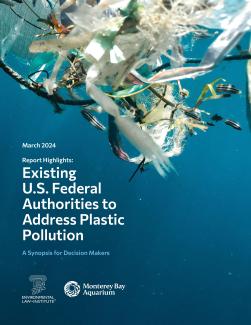Let’s Get the Most Out of Plastic Waste

Since the advent of large-scale, plastic production, there have been numerous advances enabled by novel products. These benefits span categories, from energy efficiency to medical technology to lower spoilage of meats and produce. Plastics also often deliver many positive attributes when compared with alternative materials for the same products or packaging. Plastics are an enabling material that has demonstrated advantages when substituted for other substances, such as metal, glass, and paper.
The plastic waste that results is primarily due to consumer behavior. That behavior ranges from frugal purchasing habits to post-use product disposal. Yet, the attention that has been given to the waste issue is sometimes misguided. The plastic producers are making products that are in demand by consumers; packagers are using plastics to satisfy performance requirements that reflect consumer preferences; and waste management entities work to safely handle the material that the consumer discards.
It appears that consumers will not compromise or relax their demands regarding the properties and performance they want in the products they purchase. Therefore, efforts to ban plastics (or possible technologies) are often counterproductive to reducing environmental impacts.
Furthermore, consumer behavior, at least in the United States, has not evolved sufficiently to separate the appropriate resins post-use. Evaluation of recycling growth options is an important part of a comprehensive approach to keeping post-use plastics in the economy. Yet, mechanical recycling rates for plastics in the United States have plateaued and many non-bottle plastics go unrecycled. This is not due to lack of source separation or collection efforts. For example, a recent analysis our research team completed showed that in New York City only 49 percent of the plastics that go into the recycle bin actually get recycled. Consequently, the actual recycling rate is due to several factors ranging from economic to final product performance requirements.
To align with the sustainable waste management hierarchy supported by the the United States and several other developed nations, all possible solutions must be deployed. Those solutions include reducing consumption to improvements in extraction of energy and materials. The overarching goal is to avoid plastics from going to landfills.
Specific to recycling, EPA defines it “as the recovery of useful materials, such as paper, glass, plastic, and metals, from the [municipal solid waste] stream, along with the transformation of the materials, to make new products to reduce the amount of virgin raw materials needed to meet consumer demands.” Fortunately, plastics can be a feedstock for chemical synthesis—a process that can be achieved without combustion by several existing “advanced recycling” technologies, which are being developed and commercialized as a complement to mechanical recycling by a number of companies. Advanced recycling processes break down the plastic polymers to their chemical constituents to enable downstream processes to re-manufacture new plastic products or plastic-derived chemicals.
Two examples are pyrolysis (heating without oxygen) that yields an oil, and gasification (heating with air but not enough to completely burn) that produces a gas that is further processed into chemicals. In studies we have done with established commercial-scale processes it has been demonstrated that plastic molecules cannot be 100 percent directed to only one final product using advanced thermal (not combustion) techniques. This is also true for mechanical, conventional, plastic recycling.
In the purest of waste plastic streams, the maximum that will actually be recycled is up to 80 percent. However, in real life impurities will reduce that closer to 50 percent. We have shown that by using advanced thermal fluid catalytic cracking processes, 50 percent of plastics can be recycled back into starting chemicals for plastics. The rest is made into lubricating oils or fuel. That remainder is a direct offset of virgin raw material that would normally be extracted for oils and fuels.
It must be recognized that all processes related to waste plastic management, except for consumer waste reduction efforts, produce emissions. Even reuse of plastic products requires cleaning and the use of water that gets discharged into the environment. The emissions that would be generated from advanced recycling come from performance additives and contamination from the waste stream. The typical operating temperature of pyrolysis destroys many problematic chemicals, including BPA and PDBEs nearly completely and PFAS to a lesser extent. Gasification temperatures almost entirely destroy those problematic chemicals. Although protocols exist to have those materials separately collected, there is inevitable contamination that exists in a real-world mixed plastic waste stream. The important aspect is that the emissions are properly treated or managed consistent with best practices and regulations.
Not using all solutions available to manage the plastic waste that you and I generate will only result in more going into landfills. After the products have outlived their intended use it would be better to extract some value.
Marco J. Castaldi is chair of the Chemical Engineering Department at City College of New York.




